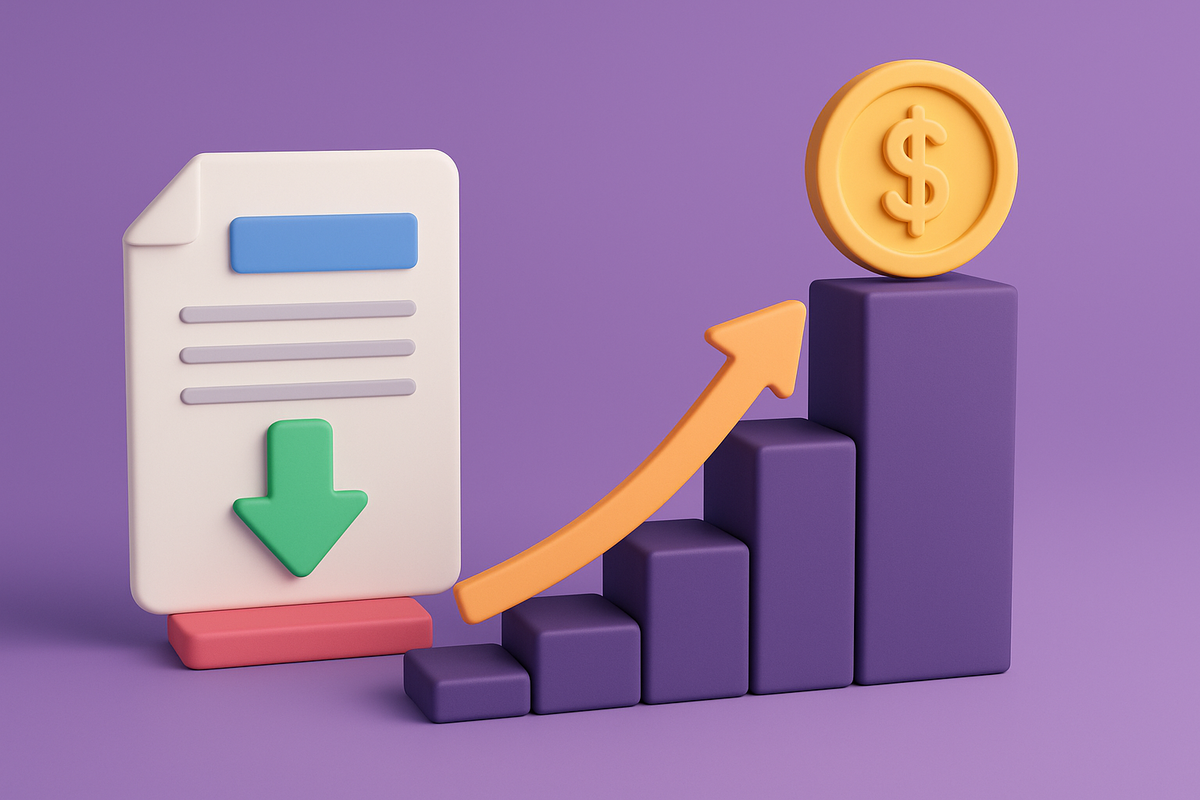Every B2B marketer knows that whitepapers are powerful tools for lead generation. They attract the right audience, establish thought leadership, and offer valuable insights. But here’s the challenge while getting downloads is easy, turning those downloads into real revenue is where most campaigns fall short.
The modern B2B buyer journey is longer, more complex, and filled with distractions. A whitepaper download is just the beginning. To convert that initial interest into sales, businesses must focus on nurturing, personalization, and intelligent follow-up strategies that guide prospects through the funnel.
This blog explores the proven steps to transform your whitepaper leads into a revenue-generating demand engine in 2025 and beyond.
Why Most Whitepaper Leads Don’t Convert
It’s a familiar story — marketers celebrate hundreds of whitepaper downloads, but only a handful convert into meaningful conversations. Why? Because download ≠ intent.
Many leads download content for research, curiosity, or competitor analysis not because they’re ready to buy. Without proper nurturing, these leads fade away, leaving marketing teams questioning their ROI.
To fix this, marketers must shift their focus from lead quantity to lead progression guiding prospects from initial awareness to purchase readiness through targeted content and smart automation.
Step 1: Qualify and Segment Your Leads
Not every download deserves the same follow-up. The first step is to qualify and segment your whitepaper leads based on relevance and readiness.
Key Segmentation Criteria:
-
Job Title and Role: Prioritize decision-makers and influencers.
-
Company Size and Industry: Align with your ideal customer profile (ICP).
-
Engagement Behavior: Track time spent reading, page views, or repeat visits.
-
Intent Data: Look for signals like other content downloaded or product pages visited.
Platforms like Whitepapers Online already provide validated and filtered leads, ensuring your outreach starts with real prospects — not junk data.
Step 2: Nurture with Contextual Content
Whitepaper downloads show interest, but not intent. To bridge that gap, nurture leads through personalized follow-ups that continue the story your whitepaper started.
Examples of Nurture Content:
-
Follow-up Emails: Offer related case studies or infographics.
-
Webinars: Invite readers to deep-dive discussions on the same topic.
-
Blogs: Send supporting articles addressing pain points covered in the whitepaper.
-
Videos: Simplify complex concepts from the whitepaper into visual explainers.
Use marketing automation tools (like HubSpot or Marketo) to schedule these touchpoints based on engagement behavior. The goal is to educate, not sell immediately.
Step 3: Score Leads Intelligently
Lead scoring helps prioritize prospects who are most likely to convert. Assign points based on behavior such as downloading multiple assets, visiting your pricing page, or attending webinars.
Once leads hit a certain score threshold, they can be handed off to sales as Marketing Qualified Leads (MQLs).
Sample Scoring Framework:
| Action | Points |
|---|---|
| Downloaded a whitepaper | +10 |
| Opened nurture emails | +5 |
| Clicked a CTA link | +10 |
| Visited product page | +15 |
| Requested a demo | +25 |
This structured approach ensures sales teams focus their time on the right leads the ones showing genuine intent.
Step 4: Align Marketing and Sales for Smooth Handoffs
A seamless marketing-to-sales transition is key to turning leads into revenue. Schedule regular syncs between teams to review:
-
Lead scoring criteria
-
Conversion data
-
Feedback on lead quality
Use CRM integrations to automate lead transfer and ensure sales has complete context from content engagement to email behavior.
When both teams operate on shared data, pipeline velocity increases, and no lead falls through the cracks.
Step 5: Retarget and Re-engage
Not all leads will convert immediately — and that’s okay. Retargeting can keep your brand top of mind.
-
Display Ads: Serve ads promoting related content or free trials.
-
LinkedIn Retargeting: Target specific job roles who engaged but didn’t convert.
-
Email Drip Campaigns: Reconnect with dormant leads after 30–60 days.
With consistent re-engagement, your brand remains visible during their decision-making window.
Measuring Success: From Downloads to Deals
Turning downloads into deals means tracking more than form fills. Focus on metrics that measure actual business impact:
-
Lead-to-MQL conversion rate
-
MQL-to-SQL rate
-
Sales velocity (time from download to deal)
-
Pipeline contribution and revenue influenced
When done right, a single whitepaper campaign can influence multiple opportunities even months after its initial launch.
The Future: AI-Driven Lead Conversion
By 2026, AI will play a larger role in predictive nurturing automatically identifying which leads are ready for outreach based on engagement patterns.
AI-powered systems will score, segment, and personalize content in real time, turning whitepaper campaigns into fully automated revenue pipelines.
Platforms like Whitepapers Online are already leveraging intelligent algorithms to deliver validated, intent-driven leads that are more likely to convert.
Conclusion
Generating downloads is easy turning them into revenue is what defines great marketing. By qualifying, nurturing, scoring, and retargeting intelligently, businesses can transform whitepaper campaigns from content assets into consistent demand engines.
It’s not about more leads it’s about smarter, higher-quality leads that actually move the needle.

